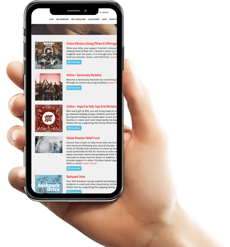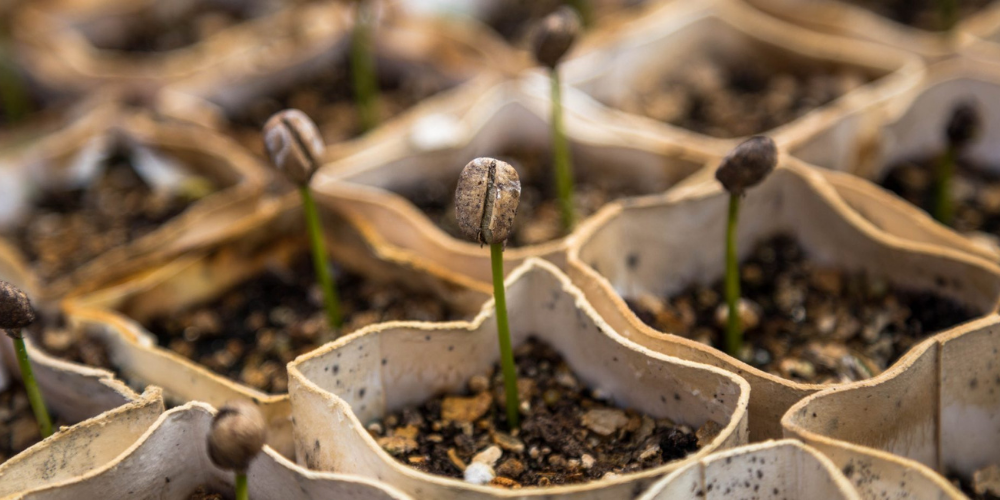7 Generosity Seeds Every Church Should Sow in 2022
“How to grow generosity.” It’s a common theme among churches and the giving platforms that serve them. If there was an easy formula for growing...
3 min read
Gina Calvert
:
November 8, 2022

Microdonations are, as the name suggests, small donations. You’ve seen the concept effectively used by companies collecting spare change at the register of multiple organizations.
It has been successfully used in mobile text campaigns to raise millions for disaster recovery with requests for just $5 or $10 dollar donations. (The first campaign of this type was for the 2010 Haiti earthquake, after which the American Red Cross raised over $32 million within a month, and established the effectiveness of mobile giving and microdonation campaigns.) (Source)
Mobile microdonations of $200 or less have also made up a growing share of fundraising efforts in our presidential primaries since 2000. (Source)
Nonprofits have begun to request small or unusual amounts (i.e. $7 or $23) as a way to set the donation bar-to-entry low. Studies show this ultimately results in a higher “donor lifetime value” than that of a large one-time donation. A smaller amount is easy to round up or eventually add to, helping to increase donors’ comfort with a larger gift amount.
These examples show that there really is something to the idea that every little bit helps. That’s true for fundraising … and it’s true for discipling givers in financial stewardship.
One of our clients, Central Church, has a Generosity Rockstar program. The church defines a Generosity Rockstar as “someone who loves God and Central and commits to give generously to God through Central.”
Here’s how they describe the point of the program:
“At Central, it’s not about the money or the specific dollar amount. We don’t want something from you, but rather, we want something for you. We want you to experience the blessings that the Bible promises when we live out a life of generosity! Prayerfully consider how much God is calling you to give and trust Him with that amount. For some, it may be $20 or more per week, for others it may be $10 per week, $5 per week, or even $1 per week. Ultimately, it’s about taking a first step and trusting God with our finances.”
They have learned that consistency (aided by recurring gift scheduling) helps develop trust and generosity even at these small amounts.
Back in the day when the offering plate was passed, many churches explained to visitors that they were not expected to give when the plate reached them. Central’s twist on that sentiment is that if a visitor or new member wants to give, they are encouraged to give their first gift to the church’s food bank fund.
When they go to the giving page and see the gallery of Give Stories on Central’s giving page, as illustrated to the right, they get the best possible introduction to what the church is doing, with no sense of being asked to support a church they know little about. They are immersed in a large variety of giving opportunities that may inspire them to give more than they planned or seek additional ways to connect with the church. (This media-rich giving experience is available only through Vision2.)
Ask ladders (or give ladders) are another way to encourage givers to incrementally grow their gift amounts without saying a word. This blogpost explains a 1994 study on something called the pique technique, how it applies to both ask ladders and microdonations, and how Vision2 ask ladders work.
You already know that recurring giving is a valuable tool to help churches budget, forecast future giving and smooth out giving dips. Did you also know it’s OK to let your church know the benefit to the church AND the giver of scheduling out their current gift amount?
One way to easily do this is by embedding the option right into the giving form. Use a giving software (like Vision2) that asks givers if they would like to make the gift they’re giving recurring (if you enable this option). And let those making pledges know about recurring giving, including how easy it is to edit their scheduled gifts at any time. Your recurring gift feature can play an important role in helping givers meet the goals they’ve set for themselves.
Maybe it’s time to think about stewardship in baby steps (microproductivity) that leverage God’s word, technology and the proven science of how the brain processes the act of giving. Microdonations can be a valuable tool in your toolbox.
Learn how other churches are approaching the challenges of financial discipleship. Explore our 2022 stewardship survey initiative and follow-up report and resources.
Or to learn more about how Vision2 supports financial stewardship and generosity growth efforts, reach out to chat about your questions.

“How to grow generosity.” It’s a common theme among churches and the giving platforms that serve them. If there was an easy formula for growing...

Brain scientists say that the ability to imagine can influence our every action and open us up to creative ideas.

Maybe you’re not ready to hear about giving limits. After all, 2020 had more than its share of limitations, didn’t it? We’re all hoping 2021 is...